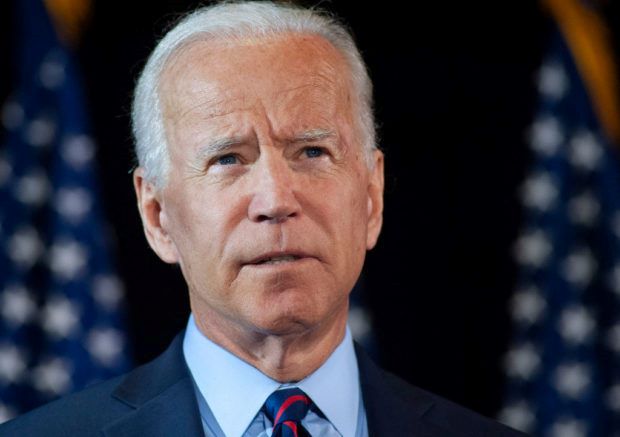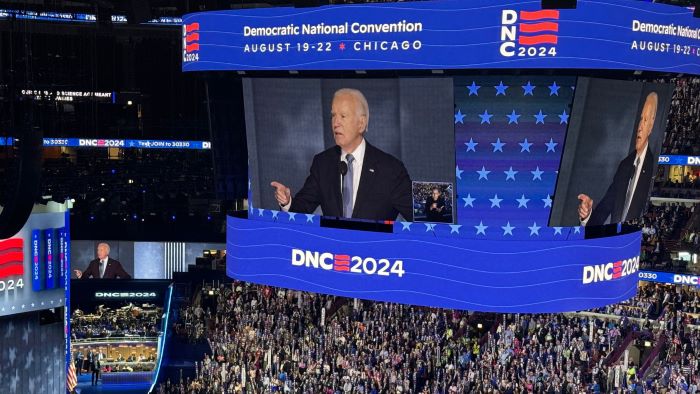

G. Kalyan Kumar
November 5, Tuesday, will be a watershed date as the day of voting for the United States presidential elections 2024. The election will also anoint the country’s vice president, who will be the running mate of the winning contestant.
In the final picture, former president Donald Trump of the Republican Party and reigning Vice President Kamala Harris from the Democratic Party are in the fray.
Harris made a wildcard entry after President Joe Biden decided to withdraw from the contest on health grounds and also bowing to the pressure from the leadership of the Democratic Party after a subpar debate performance.
Joe Biden’s withdrawal and the aftermath
Biden’s withdrawal was sort of a shot in the arm for Trump, who was in the midst of many legal battles and many contenders in the GOP vying for nomination.

However, the unexpected entry of Kamla Harris into the fray made the contest indeed tight. Trump is also gaining from a windfall of voter sympathy after he survived a bid on his life and narrowly escaped an assassin’s gunshot.
The presidential race looks like a closely contested battle. According to the ABC News/Washington Post/Ipsos poll, Vice President Kamala Harris leads with her head-to-head matchup to Trump with vast improvements over President Joe Biden in terms of enthusiasm and perceived readiness for the job.
Harris made a turnaround in the prospects of Democrats with a better rapport among key groups, including swing-voting independents.
Vice President nominees
Harris has declared Minnesota Governor Tim Walz as the running mate for the Vice President’s office, while Trump has picked JD Vance, the Senator from Ohio.
Trump sways the electorate with an upper hand on the overall economy and inflation front and many see him as a promise in fixing the so-called immigration-related mess and other problems.
A poll, produced for ABC by Langer Research Associates with fieldwork by Ipsos, finds that more people see Harris as qualified for the job, 53 percent than 47 percent behind Trump.
In a five-parameter matchup, the poll finds Harris/Walz and Trump/Vance in the range of 47 and 44 percent among the general public and registered voters.
Among all adults, the support for other candidates like Robert F. Kennedy Jr. and running mate Nicole Shanahan has crashed to 5 percent from a peak of 12 percent in April.
Similarly, the duo Cornel West and Melina Abdullah have one percent. So is Jill Stein of the Green Party.
Important poll issues
The poll has brought many existential issues to the fore. They range from the future of reproductive rights to the chances of meaningful action on climate change, the strength of US support for Ukraine in its war with Russia to strengthening democracy in America itself.
Among the adults, Harris has a higher appeal than Biden. A vast section of Americans rates her highly over Trump as having the physical health to serve effectively as president, scoring over Trump's 31-point when Biden was considered in the fray.
Age wise Biden is 82 while Trump is 78 and Kamala Harris will turn 60 in October. Harris is also ahead of Trump in being seen as having the mental sharpness to serve effectively, erasing a 30-point lead Trump enjoyed over Biden.
Harris also leads Trump by 7 points in empathy. In this, both Biden and Trump had been on an even footing in July.
The gender appeal is also in Kamala’s favour. According to polls, 38 percent of Americans say that having a woman as president would be a good thing, while more than 14 percent see it as a bad thing. However, 47 percent consider gender makes no difference in the role’s efficiency.
Trump’s strengths
Trump is ahead of Harris by 9 points, with more trust to handle the economy and inflation, retaining his edge over Biden consistently. More than 85 percent of adults rate these as vital in their vote for president and are top issues among a dozen issues under reckoning.
Trump towers with a 10-point lead over Harris in the ability to fix the immigration situation at the U.S.-Mexico border, despite a slide of nearly 4-points since July. Trump also scores in handling the Middle East war between Israel and Hamas.
On other issues, including health care, protecting American democracy, crime, and safety, Harris gains more points than Trump. On the issue of crime control, the credentials of Kamala Harris as a former prosecutor is helping her.
Harris is also ahead with more points in the matter of appointments to the U.S. Supreme Court and the ability to handle abortion, race relations, etc.
The percentage of independent voters marked a swing from +4 points for Trump in July to +11 points for Harris in August. The 15-point swing in favor of Harris is significant.
The trends, according to poll observers, are that both classic swing voters and independents go with the winner. This was evident in 9 of the last 12 presidential elections, except those in 2012, 2004, and 1976.
Also, support from Black people has swung by 12 points in Harris' favor, from +60 for Biden in July to +72 for Harris in August.
Anti-incumbency sentiment minimal
Democrats are not encountering any hard anti-incumbency apathy. Under Joe Biden, the post-Covid recovery is looking fair.

President Joe Biden
Jobless numbers are down, and the stock market is doing well. However, many Americans feel that even if the economy is doing well, it is not helping them in managing prices, housing, or income growth.
There is unease over rising cost of living, reflected in many public polling with concerns raised over rising inflation. The buzz on possible interest rate cut in September by the Fed Reserve is not enough to soothe the ruffled sentiments of the wage earners.
Abortion rights issue
Republican attacks on abortion rights focusing on the Dobbs v. Jackson ruling and the latest Mifepristone abortion pill access case is widening the polarization around reproductive rights and planned parenthood.
For Democrats, any threat to women’s reproductive rights is a challenge to be taken seriously. The liberal stand of Democrats has enabled the party in many electoral wins, even in conservative states.
In the matter of abortion, American society has been polarized on pro-life (against abortion) or pro-choice (for abortion).
Until the 1973 verdict of the Supreme Court over the Roe v. Wade case, abortion was illegal in most U.S. states and allowed only under extreme circumstances.
However, a poll held in 2023 showed nearly 52 percent of respondents consider themselves pro-choice, meaning the decision to abort a pregnancy is the personal choice of a woman. Pro-life supporters, comprising 44 percent of respondents and backed by Republicans, oppose abortion altogether.
The growing assertive abortion rights constituency is sure to make a considerable influence on the presidential choice.
Outlook for Democrats and Republicans
Starting with the 2000 United States presidential election, the terms red state and blue state came into vogue. Red states signify Republican stronghold states, and the blue states reckon the influence of Democrats.
By contrast, states where the vote fluctuates between the Democratic and Republican candidates are called swing states or purple states.

In other words, states are marked red and blue if both senators are Republican or Democratic from that state. Purple states denote one Republican and one Democrat from the state.
According to poll pundits, from the 2016 presidential election to the 2020 poll, only five states have changed color.
Until 2020, 35 of 50 states voted consistently for the same party in every presidential election since the red-blue terminology became popular in 2000. Only 15 states swung between the 2000 presidential election and the 2020 election.
Republican Red States
There are some states firmly rallied behind the Republican camp and are called red states. They include the following.
• Alabama
• Alaska
• Arkansas
• Idaho
• Indiana
• Iowa
• Kansas
• Kentucky
• Louisiana
• Mississippi
• Missouri
• Montana
• Nebraska
• North Dakota
• Oklahoma
• South Carolina
• South Dakota
• Tennessee
• Texas
• Utah
• West Virginia
• Wyoming
All the above states have displayed unflinching Republican allegiance in recent presidential elections as reliable strongholds for the party.
Blue States as Democrat strongholds
Blue states, emblematic of solid Democratic support based on recent electoral trends, showed consistent Democratic fervor and are treated as reliable bastions for the party.
• California
• Colorado
• Connecticut
• Delaware
• Hawaii
• Illinois
• Maine
• Maryland
• Massachusetts
• New Hampshire
• New Jersey
• New Mexico
• New York
• Oregon
• Rhode Island
• Vermont
• Virginia
• Washington
• District of Columbia
Swing states
In contrast to the red and blue states, there are swing states or purple states where the electoral outcome is less predictable. They include the following states.
• Arizona
• Florida
• Georgia
• Michigan
• Minnesota
• Nevada
• North Carolina
• Ohio
• Pennsylvania
• Wisconsin
Trump inroads into Democrat bastions
However, there is no permanent stasis in the poll scenario, and according to poll dynamics watchers, the US presidential elections 2024 are currently undergoing a crazy turn of events with signals that in some battleground states Kamala Harris is not doing well.
According to reports that were updated on Navigator Research's report, Kamala Harris and Donald Trump are currently tied in regions like Michigan, North Carolina, and Wisconsin.
That Trump made serious inroads in Wisconsin is a surprise that Democrats had nourished Wisconsin over the years as the party’s stronghold.

Republican convention
According to the Navigator’s research, Kamala Harris is trailing behind Trump in Arizona and Pennsylvania, which are vital swings despite the Democrats' aggressive campaign.
It adds that the close tie in the battleground states is unprecedented, and even in earlier elections this kind of a closer contest was not visible.
However, most surveys are unanimous that there is space for improvement for Harris, the Democrat nominee, provided she maintains her popularity ratings.
The presidential polls will also fill 435 seats in the United States House of Representatives and 34 of the 100 seats in the US senate, forming the 119th United States Congress.
Outright prediction difficult
However, an affirmative prediction favoring Democrats or Republicans will be hard to make. The 2024 election cycle is also making concrete predictions on the outcome very difficult.
Polls in South Africa pushed out the dominance of the incumbent party, while in India the ruling party BJP faced dent in its expected majority targets.
The arrival of fresh faces marked the elections of Senegal and Mexico. In France and the United Kingdom, changes to the status quo politics were the highlight.
So, to see the ultimate winner going to be graced by the American people, one needs to wait until the poll process gets over.


